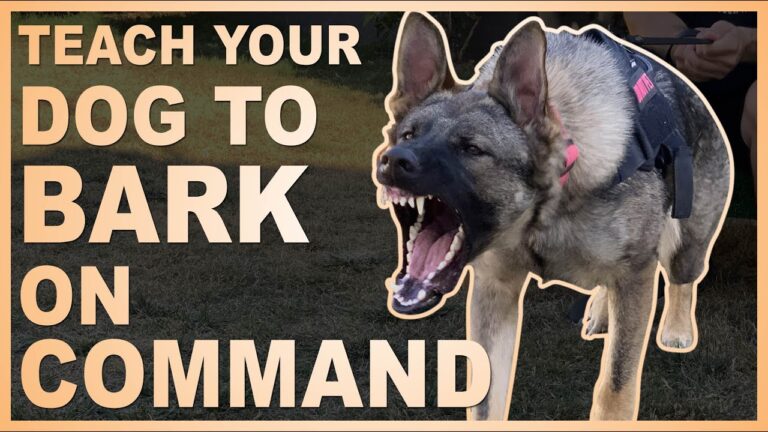Are you curious about the language of our furry friends? In this blog post, we dive into the world of canine communication, focusing on the intriguing phrase “show me a dog barking.” Dogs express themselves vocally through barking, and understanding this form of communication can help decipher their needs, emotions, and intentions. Whether it’s a playful bark, a warning signal, or a call for attention, our canine companions use barking as a valuable tool for interaction. Join us as we explore the power of interpreting a dog’s bark and learn how to effectively communicate with our beloved four-legged pals.
The Importance of Canine Communication
Canine communication plays a crucial role in understanding dogs’ needs, emotions, and behaviors. By observing show me a dog barking, pet owners can decode various vocalizations, body language, and facial expressions to enhance their bond with their furry companions.
The Power of Barking
Dogs use barking to convey a range of messages, including alerting to danger, expressing excitement, or seeking attention. It is essential to pay attention to the pitch, duration, and frequency of barks to interpret the underlying meaning.
Body Language and Tail Wagging
Aside from vocal cues, dogs communicate through body language. Tail wagging, for instance, can indicate happiness, anxiety, or potential aggression. Understanding these subtleties can prevent misinterpretation and foster better relationships.

Understanding Dog Behavior
Dogs communicate through various means, with barking being one of the most common and distinctive forms of expression. Show me a dog barking can reveal a lot about their emotional state, needs, and intentions.
The Importance of Barking
Barking serves as a primary way for dogs to communicate with their owners and other animals. It can signal excitement, alertness, fear, or aggression, depending on the context.
Types of Barks
**In the realm of canine communication** showing me a dog barking, it’s crucial to understand that different types of barks convey different messages. For example, a sharp, repetitive bark often indicates alarm or warning, while a lower-pitched, rhythmic bark may express playfulness.
- Alert barks
- Aggressive barks
- Excited barks
- Lonely/Desperate barks

Common Reasons for Barking
Dogs bark for various reasons, and understanding these motivations is crucial in deciphering their communication. Here are some common reasons why dogs bark:
1. Attention Seeking
Some dogs bark to get attention from their owners. This behavior is often reinforced inadvertently by giving them attention when they bark.
2. Alarm/Alert
Dogs bark to alert their owners of potential threats or intruders. It’s a natural instinct for them to warn the pack of perceived dangers.
In many cases, they may be protecting their territory and loved ones.
Training Techniques for Barking
Teaching a dog to bark on command can be a fun and useful skill. To begin, use positive reinforcement to reward your dog for barking naturally. Once your dog understands that barking leads to treats or praise, you can start associating a verbal cue with the behavior.
Positive Reinforcement
When your dog barks naturally, say the command “Speak” and immediately reward them with a treat. Repeat this process several times to reinforce the association between the command and the behavior.
For more effective training, use clicker training along with treats to capture the exact moment your dog starts barking. This will help them understand the connection between their action and the reward.
Consistent Practice
Consistency is key in training your dog to bark on command. Practice the “Speak” command in different environments and situations to ensure your dog learns to respond regardless of distractions. Be patient and consistent with your training sessions.
Using a visual cue along with the verbal command can also help reinforce the desired behavior. Pairing a hand signal or a specific gesture with the command can enhance your dog’s understanding.
Positive Reinforcement in Canine Training
Positive reinforcement is a powerful tool in shaping a dog’s behavior through rewards. When training your dog, using show me a dog barking can enhance the communication process and strengthen the bond between you and your furry friend.
The Science Behind Positive Reinforcement
Positive reinforcement works by associating a desired behavior with a reward, such as treats, praise, or playtime. This method encourages dogs to repeat the behavior to receive the reward, leading to faster and more effective learning.
By using show me a dog barking as the cue for a behavior and rewarding the dog when they bark, you can communicate effectively and teach them when it is appropriate to bark.
Benefits of Positive Reinforcement
Using positive reinforcement in canine training helps build a strong, trusting relationship with your dog based on mutual respect and understanding. It creates a positive learning environment and reduces the likelihood of fear or anxiety in your pet.
- Enhances communication
- Boosts confidence
- Encourages good behavior
Interpreting Different Barks
Understanding the various sounds dogs make is crucial in deciphering their needs and emotions. When a dog barks, it can convey different messages based on pitch, volume, and duration.
Excitement Bark
Excited barking is characterized by quick, high-pitched barks. This type of bark often indicates eagerness or anticipation. Dogs may exhibit this bark when they see their favorite toy or when they anticipate going for a walk.Show them the world in 2022.
Warning Bark
Warning barks are deep and continuous, signaling a potential threat or intruder. This bark serves as a protective mechanism to alert the owner of a perceived danger.Be cautious of strange sounds/emotions.
- These barks are often accompanied by body language such as raised fur or a stiff stance.
- Training your dog to differentiate between friend and foe can help in controlling warning barks.
Creating a Strong Bond with Your Dog
Building a strong bond with your dog is essential for a fulfilling relationship. Dogs are social animals that thrive on companionship and love. By investing time and effort into understanding and communicating with your furry companion, you can strengthen your bond and create a deep connection that will last a lifetime.
Training Together
Engaging in training sessions with your dog not only teaches them new skills but also reinforces your role as a leader. Training sessions provide an opportunity for you to work together, communicate effectively, and build trust.
Consistent training sessions can improve obedience and strengthen the bond between you and your dog.
Quality Time
Spending quality time with your dog is crucial for bonding. Whether it’s going for a walk, playing fetch, or simply cuddling on the couch, these moments create memories and strengthen your relationship.
- Take your dog for a stroll in the park
- Play interactive games together
- Provide cuddles and affection daily
Frequently Asked Questions
- Can all dogs bark?
- Yes, barking is a natural form of communication for most dog breeds.
- Why do dogs bark?
- Dogs bark to communicate various things such as alerting their owners, expressing excitement, or when feeling threatened.
- How can I teach my dog to bark on command?
- You can use positive reinforcement techniques to train your dog to bark on command. Start by associating a specific cue with barking and rewarding them when they bark upon command.
- Are there different types of barks with different meanings?
- Yes, dogs have different types of barks that can convey different meanings such as a playful bark, a warning bark, or a distressed bark.
- What should I do if my dog is barking excessively?
- Excessive barking could be a sign of an underlying issue. It’s important to identify the cause of the barking, whether it’s due to boredom, anxiety, or a medical problem, and address it accordingly.
Unlocking the Beauty of Canine Communication
As we journeyed through the intricate world of canine communication, we delved into the rich tapestry of dog barking. By exploring the nuances of this vocalization, we uncovered the myriad ways dogs express themselves and connect with humans.
Remember, when you ask, “Show me a dog barking,” you are not just witnessing a sound; you are deciphering a language filled with emotions, needs, and intentions. Understanding this language can deepen the bond between you and your furry companion.
In summary, by embracing the power of canine communication, we open doors to a deeper relationship, improved training methods, and enhanced overall well-being for our beloved dogs. So, next time you hear a dog bark, remember, it’s not just noise—it’s a conversation waiting to be understood.



